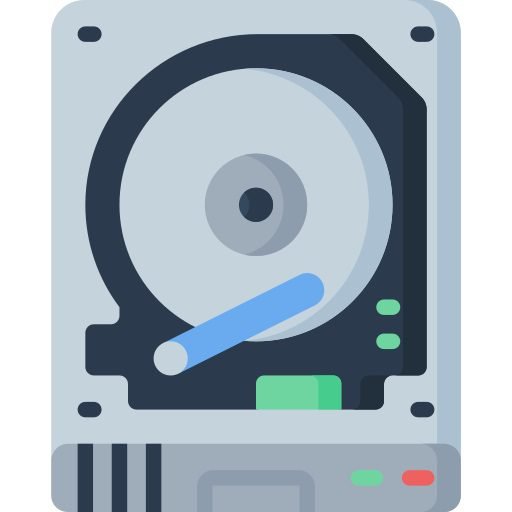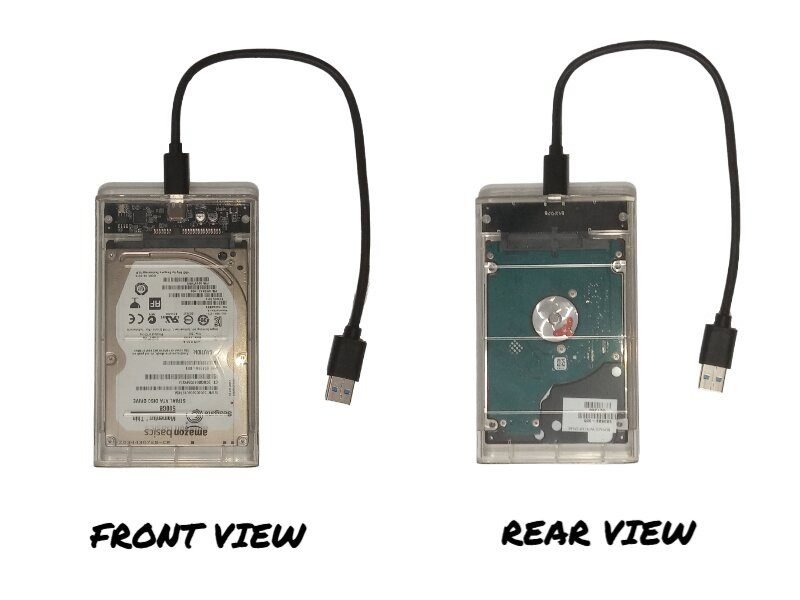
Since everyone has some information to store nowadays, our storage requirements have also expanded. An external storage device seems promising for preserving data in the long term. Beware though, if you save your data in any available drive and forget about it, expecting to access it decades later, you may be only chasing rainbows!

Here’s why your saved data deteriorates with time if overlooked:-
- One data storage is not enough: By having two to three storage solutions, you avoid the risk of losing your data due to corruption, damage or accidental deletion. Keeping a copy of your data on an external storage device as well as a trusted cloud storage service is always better.
- Evolution of technology: There is no guarantee that the software or Operating System you currently use to manage your data will remain available in the future. Migrating to the next best data managing solution every few decades before your current one gets outdated is always wiser.
- Prone to deterioration: External storage devices get obsolete over time. It’s advisable to refresh your data archive every few decades by transferring it onto a new storage device before the old one wears out.
- Security of your data in your hands: If you choose to depend solely on cloud storage, consider this: Cloud Storage is provided by a third-party service. As long as that service exists and your account isn’t hacked, your data will remain accessible to you. Using strong passwords and changing them regularly helps secure your files, accounts and data.
Commonly preferred external storage devices
Let’s review some commonly preferred external storage devices to help you make an informed decision for selecting storage to inherit your data forever:-
Attributes | Pen Drive | SD (Secure Digital) Card | HDD (Hard Disk Drive) | SSD (Solid State Drive) | Cloud Storage |
Product Representation |  |  |  |  |  |
Definition | A small removable USB (Universal Serial Bus) device that can connect to any PC/Laptop on the go. | Comes in a varity of sizes, can easily fit into consumer electronics and helps in extending their memory. | A mass storage device that reads/writes data using electro-magnetic mechanism with one or more rigid rapidly rotating platters coated with magnetic material. | A mass storage device successto HDD. It provides non-stop data storage without using moving parts. It is compact in size and has very low power consumption. | A tool to store data over the internet in off-site locations. The servers are maintained by a third-party provider who is responsible for hosting, managing, and securing data stored on its infrastructure. |
Applications |
|
|
|
|
|
Approx. Starting INR (2025) | ₹700 | ₹350 | ₹4500 | ₹1500 | ₹100 to ₹250 per GB per month |
Approx. Data Longitivity | 3-5 years | 3-5 years | 5-10 years | 5-10 years | Indefinite |
Inherit your data forever with these tips
Rest assured, with the right approach, it’s indeed achievable to inherit your data forever. Follow these tips to accomplish it:-
- Organise all your media into folders/sub-folders and label them as per your preference such as dates/locations/events etc. Make sure to delete any duplicate copies.
- Copy these files onto an external storage device and store them somewhere safe. Choose a long term external storage device that is best suited to your requirements. To make your decision easy, refer to the above section “Commonly preferred external storage devices”.
- As a backup keep another copy of these files on an online cloud storage service such as Google Drive /OneDrive etc.
- Additionally, if you have access to a PC/Laptop with a large storage memory, save a third copy here as well.
- Regularly transfer your freshly captured personal data onto your external storage device as well as cloud storage.
- Secure your personal data vault by enabling password protection such as Bitlocker/VeraCrypt for your external storage device and enable two-factor authentication for your cloud storage.
- Every 10-15 years migrate to the latest technology by transferring all your data to the next best storage solution before your current one gets obsolete.
- Every 10-15 years renew all your old electronic devices to the latest that you use to capture/organise your data. This ensures that the quality of your data is always improved.
- Maintain your data management software/Operating System in optimal working conditions by updating to the latest version, performing malware checks, and repairing them if needed.
Case Study: Reviving an old Laptop’s internal hard drive as an external storage device
This YouTube short How to use an old laptop hard drive as an external hard drive? by @aliaseveIT demonstrates how an old Laptop’s internal hard drive can be revived as an external storage device. This is a great way to repurpose unused hard drives from old laptops, as any unattended electronic devices only contribute to clutter. It is easy to disassemble your old Laptop and revive its internal hard drive as an external storage device at home without the need to visit a repair shop. Here are the steps that you need to follow:-
- From your PC/Laptop, navigate to Settings Gear->System->About. Get familiar with the specifications of your Laptop model.
- Let’s consider the HP 15s-dr1000 series Laptop as an example. Follow these guidelines from this YouTube video HP Pavilion 15 Notebook PC Disassembly RAM SSD Upgrade and disassemble the Laptop and access its internal hard drive.
- If you do not know the specifications of your Laptop model, then you can follow this YouTube video How To Remove A Laptop Hard Drive (Step-By-Step Tutorial). Almost all Laptops have a similar hardware architecture with slight modifications.
- Check the back panel of the internal hard drive and its interface connector type (SATA/IDE/PATA). In this example, the HP 15s-dr1000 series Laptop has an HDD with a SATA interface.
- Slide your internal hard drive inside an External Hard Drive Enclosure based on its interface connector type. For this example, Amazon Basics 2.5″ External Hard Drive Enclosure, SATA III to USB Type-C for HDD/SSD works the best for the HP 15s-dr1000 series Laptop’s internal HDD with SATA interface as shown in the image.

- Place your revived hard drive inside the External Hard Drive Enclosure to your PC/Laptop using its SATA to USB cable.
- Right-click on My Computer→Manage→Storage→Disk Management. Observe an additional space as soon the external storage device gets detected in your PC/Laptop’s disk management as shown in the image.

Think of using your old Laptop’s internal hard drive only to repurpose it but not to rely on it as an external storage device. The internal hard drive inside your Laptop is designed to serve as the Laptop’s memory and not for use as an external storage device. Without an External Hard Drive Enclosure, the internal hard drive is not protected and may be susceptible to rough handling and logical failures. For long term data storage, it’s best to use a high quality manufactured external storage device as it is durable, performs well, and has been quality tested to withstand physical damage from drops or movements.
Future storage options
With the technology boom, the demand for innovative data storage solutions is more pressing than ever. Let’s explore the potential futuristic data storage reserves:-
- Deploying Nanotechnology to build highly compact storage devices will shrink data centres to the size of sugar cubes.
- Advent of decentralized ledgers, based on Blockchain technology will fortify sensitive data and offer resistance to tampering and cyber threats.
- Projecting data into three dimensional images using Holograms is foreseen to replace physical storage media.
- The rise of the ultimate time resistant storage solution by archiving data into DNA strands.
This post was inspired by What’s the Best Long Term Storage Media? Tips to Avoid Losing Data in Your Lifetime
References:-
- https://unacademy.com/content/nda/study-material/computer/list-of-storage-devices/
- https://www.quora.com/Which-is-the-best-way-to-keep-photos-and-videos-secure
- https://www.linkedin.com/advice/0/how-do-you-securely-store-transfer-your-media
- https://blog.internxt.com/future-methods-of-data-storage/
For exclusive insights, tips and answers, please visit Wiztaqnia Forum.
- Can you inherit your data forever? - January 22, 2025
- The Future of Quantum Computing: What Will We Choose to Do? - January 15, 2025
- IoT based Indoor Air Quality ENS160 Monitor - November 20, 2024
